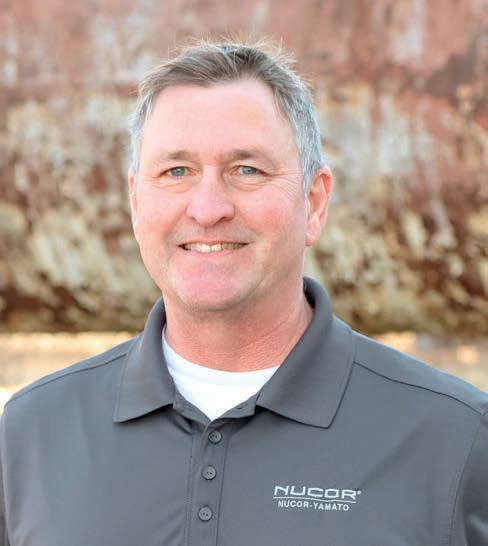
2 minute read
Rise of the Machines
from BluePrint 2023
If you think manufacturing, construction job sites and other skilled trade areas are stuck in the analog age, think again. Today’s skilled careers are as much about bits and bytes as they were about wrenches and hammers a generation ago. And while the ability to use hand tools of every description is still important to the finished product, there’s a lot more computerization at work in a typical factory than ever before.
“We are exploring opportunities to streamline our processes through automation, control systems, simulations, visual working aids and other new technologies,” said Jerry Bever, manufacturing engineering senior manager with Lockheed Martin in Camden. “Digital transformation initiatives such as robots, collaborative robots known as cobot systems, virtual reality and augmented reality are pillars in transforming the way we work.”
There are various factors driving the rapid advancement of technology into the skilled workplace and job site. For one, the marketplace is demanding products faster than ever before, a fact driven home by the supply chain issues of the past couple of years.
Second, rising costs and global competition have manufacturers of all sizes seeking every efficiency advantage it can get. And third, ironically, is the shortage of skilled tradespeople itself, which has forced companies to look to automation in order to do more with fewer people.
The result, Bever said, is a demand for employee skills that were once unheard-of in manufacturing. Not only do the manufacturing workers of tomorrow have to know how to operate these new machines, demand for on-site programmers and IT troubleshooters has never been higher.
“A general knowledge of computer skills is essential for anyone working in our industry,” he said. “An employee’s skill in working with Microsoft Office, SAP, Apriso and other programs is important in our manufacturing environment.
“Beyond that, proficiency in mathematics, physics, robotics, electronics, CNC programming and operation and computer programming and gaming simulation are all useful and at work in today’s factories.”
Transformative Technology
Three advanced technologies currently at work in factories from one end of the state to the other, each requiring employees with knowledge and aptitude to operate and maintain systems:
1. ROBOTICS
Cheaper, smarter and more efficient than ever, robots are used in a variety of manufacturing settings and tasks.
Once cost-prohibitive to all but the largest manufacturers, robotics are now typically within reach of mid-sized and smaller companies.
2. THE INTERNET OF THINGS (IOT)
IoT in manufacturing uses sensors to collect production data, giving operators valuable insights on how to run machines at peak efficiency, cutting cost, waste and production time.
The technology also allows for remote operation and monitoring of certain processes, which allows one employee to do more, even from afar.
3. CLOUD COMPUTING
Another technology not associated with manufacturing until recently, cloud computing helps teams in different divisions and even separate locations work together efficiently.
Cloud computing is also essential for companies to connect with external audiences, such as integrating vendors within the supply chain or studying consumer buying and product utilization habits.
Source: Fingent.com









